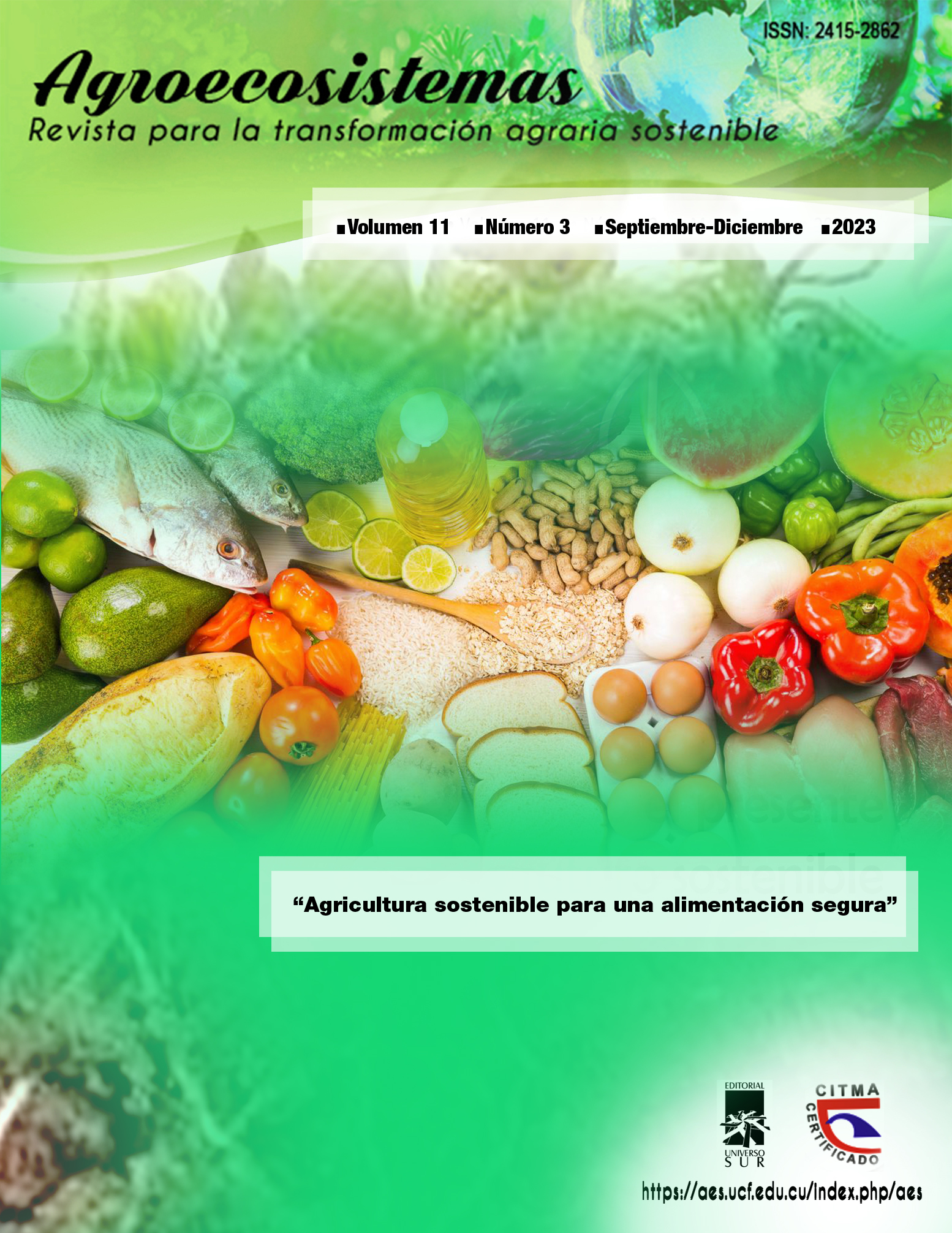Respuesta varietal en la etapa inicial de zafra en la Empresa Agroindustrial Azucarera Ciudad Caracas
Resumen
El objetivo del presente trabajo es evaluar la respuesta varietal de caña de azúcar en la Empresa Agroindustrial Azucarera Ciudad Caracas en la etapa inicial de la zafra azucarera. Las observaciones se tomaron de las cosechas comprendidas en los meses de diciembre de 2021 y enero de 2022, con cuatro replicas en la cepa planta y retoño. El rendimiento azucarero (porcentaje de pol en caña), se determinaron según la metodología establecida por el INICA. Para la estimación de la estabilidad y la adaptabilidad fenotípica, se definieron como ambientes los dos meses de evaluación en las dos cepas estudiadas, y como genotipos los 10 cultivares. Finalmente se complementó la definición de los ambientes de prueba, con la determinación de su habilidad discriminatoria y representatividad. Como resultado se obtuvo que los cultivares C1051-73 y CP52-43 presentaron altos rendimientos y estabilidad en la etapa evaluada; así como C323-68 y C86-56 inestabilidad. Los cultivares C323-68 y C86-56 ofrecieron integralmente valores inferiores de rendimiento en el mes de enero, reafirmando sus potencialidades de madurez tardía. Los mejores resultados entre ambas cepas los mostraron C1051-73, CP52-43, C86-156, C86-12 y C90-469 para el inicio de la zafra.
Palabras clave:
Estabilidad, adaptabilidad, madurez temprana, habilidad discriminatoria y representatividad.
ABSTRACT
The objective of this work is to evaluate the varietal response of sugar cane in the Agroindustrial Sugar Company Ciudad Caracas in the initial stage of the sugar harvest. The observations were taken from the harvests between the months of December 2021 and January 2022, with four replicates in the plant strain and shoot. The sugar yield (percentage of pol in cane) was determined according to the methodology established by INICA. For the estimation of stability and phenotypic adaptability, the two months of evaluation in the two strains studied were defined as environments, and the 10 cultivars as genotypes. Finally, the definition of the test environments was complemented, with the determination of their discriminatory ability and representativeness. As a result, it was obtained that the cultivars C1051-73 and CP52-43 presented high yields and stability in the evaluated stage; as well as C323-68 and C86-56 instability. The cultivars C323-68 and C86-56 offered integrally lower yield values in the month of January, reaffirming their potential for late maturity. The best results between both strains were shown by C1051-73, CP52-43, C86-156, C86-12 and C90-469 for the beginning of the harvest.
Keywords:
Stability, adaptability, early maturity, discriminatory ability and representativeness
Descargas
Publicado
Cómo citar
Número
Sección
Licencia
La editorial "Universo Sur", de la Universidad de Cienfuegos, publica el contenido de la Revista Científica Agroecosistemas bajo una Licencia Creative Commons Atribución-NoComercial-SinDerivar 4.0 Internacional.
© Podrá reproducirse, de forma parcial o total, el contenido de esta publicación, siempre que se haga de forma literal y se mencione la fuente.






